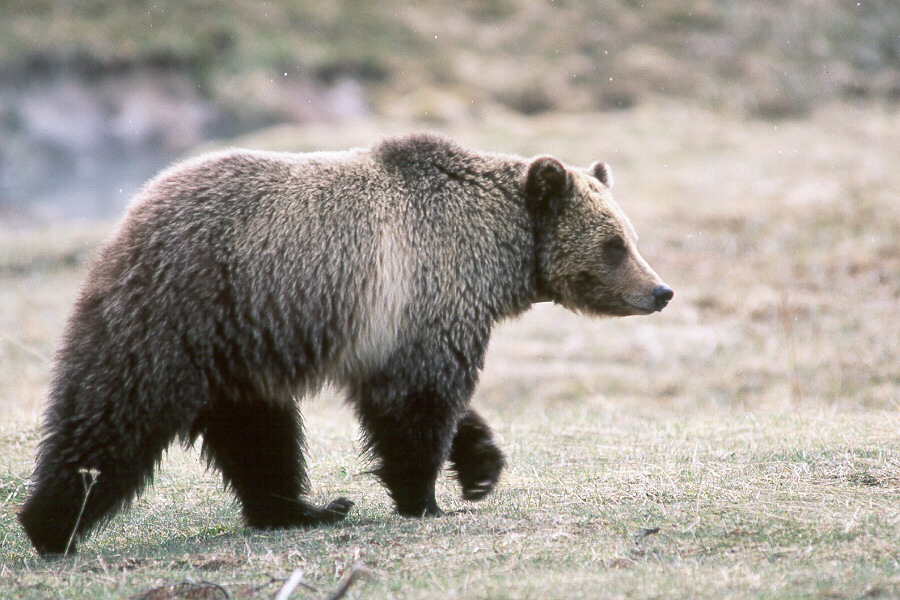CHEYENNE, Wyo. — The number of grizzly bear deaths or removals in the Yellowstone region climbed to an all-time high in 2015, but biologists say they’re not worried about the animal’s long-term survival in the area.
The known or suspected deaths of 55 bears shouldn’t interfere with plans to remove the region’s grizzlies from protection under the Endangered Species Act, Frank van Manen, leader of the Interagency Grizzly Bear Study Team, said Wednesday.
“This year should be considered within the context of what we’ve seen in terms of the long-term trend,” van Manen said.
The team of state and federal scientists and biologists estimates more than 700 grizzlies live in the Yellowstone region spanning parts of Wyoming, Montana and Idaho. That’s up from about 600 in 2010 and around 200 in the early 1980s.
Grizzlies first were listed as a threatened species in 1975. The U.S. Fish and Wildlife Service has set a management goal of 674 bears as it moves toward delisting.
One reason for this year’s high number of deaths: Poor production of wild berries, possibly because of late high country frosts and snow, caused bears to wander far in search of food.
“When you have a year of lower food availability, bears just tend to roam around more and be more vulnerable to various sources of mortality,” van Manen said. “They get into trouble more. We had a lot of conflicts this year as a result of that.”
Also, the region had only an average year for another grizzly food staple — nuts from the cones of whitebark pine trees. Grizzlies have proven adaptable, however, and able to sustain themselves on a variety of natural food sources in the region, van Manen said.
Wildlife managers this year euthanized 24 grizzlies for a variety of run-ins with people, property or livestock. Zoos took in four of those bears’ cubs, including two cubs that belonged to a grizzly sow that killed a hiker in Yellowstone National Park in August.
Wildlife managers typically euthanize problem bears only as a last resort. More often than mauling people, such bears cause issues like killing livestock and raiding trash facilities.
“But we’re also talking about a very intelligent animal,” van Manen said. “Once they learn how to get access to human food sources, it becomes a real challenge. And their homing ability is just tremendous. You can move them 50 or 100 miles and they know how to make their way back pretty quick, in a lot of cases.”
Other deaths included four grizzlies hit by vehicles. Another 19 remain under investigation. Hunters killed many of those grizzlies, and law enforcement officers are withholding details until they sort out what happened, according to van Manen.
Deliberately killing a grizzly without sufficient justification, namely self-defense, is punishable by up to a year in prison and fines of up to $50,000.
The study team counts the cubs taken to zoos in their annual mortality count. That puts this year’s toll of 59 above the previous recent high of 56 in 2012.
The study team counted 28 known and probable deaths in 2014 and 29 in 2013. Berries were more plentiful those years, van Manen said.
Biologists acknowledge they never know exactly how many grizzlies die in the region that includes Yellowstone National Park and immediately surrounding areas. The total known and unknown grizzly deaths may have topped 70 in 2015, van Manen said.
